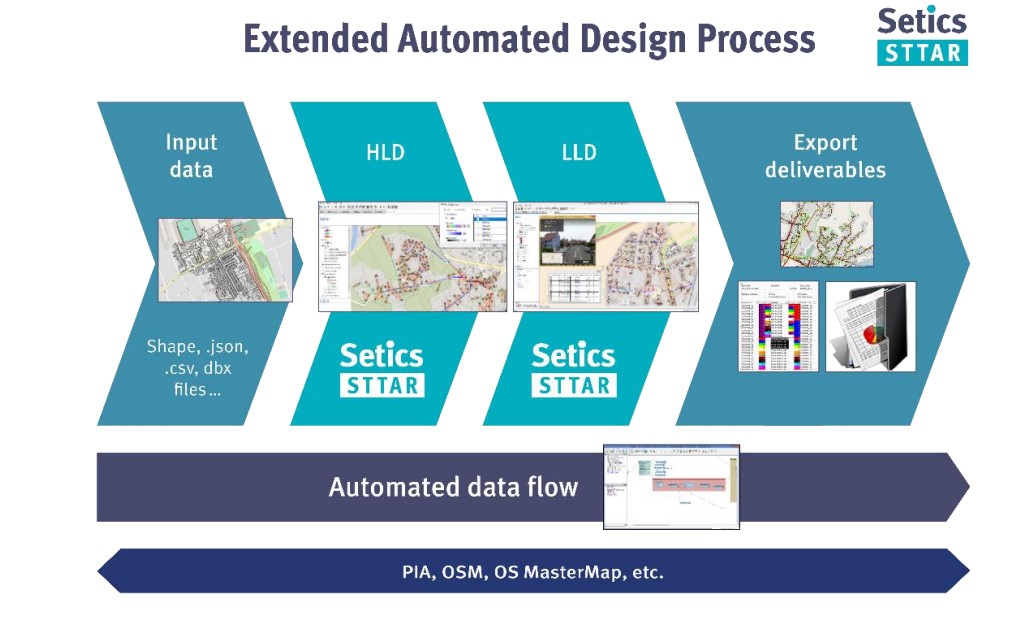In an era dominated by digital connectivity, high-speed internet has evolved from a luxury to a necessity. At the heart of this transformation are the fibre-to-the-home (FTTH) networks that enable seamless communication and digital experiences.
The design and creation of these networks entail a multitude of considerations, decisions and strategies, particularly in markets such as the UK, which have started to seriously ramp up their fibre deployment.
According to the latest Market Panorama report from the FTTH Council Europe, in association with iDate, the UK has been accelerating its fibre deployment at an extremely rapid pace since the report data collection point of September 2022. The report demonstrated that full-fibre coverage had reached 42% of UK homes, or around 12.4 million by September 2022, representing an increase of 4.3 million homes between 2021 and 2022.
Understanding FTTH network design for operators
At the starting point of any FTTH network deployment, of course, is the design of the network itself. The blueprint for an effective FTTH network in the UK is not a singular design but rather a synthesis of different elements all working together. A successful FTTH network design encompasses not only the technical prowess of engineers but also the detail of careful planning and foresight.
Considerations for network planners
Coverage and demand are crucial considerations. Network planners are entrusted with deciphering the web of demand patterns and assessing the demand for high-speed connectivity in different areas of a country. Understanding user expectations, surveying existing connectivity landscapes and predicting future growth trajectories all play a pivotal role in determining the optimal network footprint.
Factors such as feasibility, route design and technology architecture must all be planned and decided at the early stages of a project, and that’s without taking into consideration power, regulations, security and maintenance, to name a few important considerations.
Building on the foundation of existing infrastructure is also important. In a market such as the UK, where there is an existing market incumbent, network planners can consider harnessing pre-existing resources, such as ducts, chambers, and poles, to help expedite deployment while optimising costs.
Geographical landscapes are another crucial consideration, and the UK is no exception, with its mix of urban clusters, rural expanses, and other geographic idiosyncrasies. Network planners need to navigate such diverse terrain, coming up with solutions that span across cityscapes and countryside, ensuring inclusive coverage while circumventing geographical challenges.
While nobody can be expected to have a crystal ball, FTTH network architects should expect to have a view on future developments so that they can devise networks with the malleability to accommodate the technological advances that may lie ahead.
The role of automation: Pioneering precision and efficiency
Amidst all these considerations, automation has emerged as something of a disruptive way to orchestrate the complexities of FTTH network design and planning. It can accelerate the tempo of network design, choreographing the production of both high and low-level designs at a pace that traditional manual processes may struggle to match.
Automation has the added advantage of reducing human error when it comes to processes such as manual calculations. At the same time, the repeatable uniformity of design outputs can be orchestrated by automated processes, ensuring that every component adheres to the same symphony of standards and specifications.
Resources and assistance for UK network planners
Fortunately, planning a FTTH network can be a team journey with a mix of tools and assistance to help. In the UK, for example, the Openreach repository has emerged as a treasure trove of data, offering insights into existing infrastructure.
There are also numerous events, workshops and training initiatives to help planners further develop the skills required to navigate the nuances of automation implementation.
In terms of automation tools themselves, the latest generation of bespoke software solutions, such as those available from Setics, can help to unfurl the tapestry of automation, tailored to the intricate nuances of FTTH network planning.
Most recently, Setics has created an advanced Extended Automation Process to help Business Developers, Project Managers, and Network Planners organise different aspects of FTTH network planning. This system is supported by tools including FME, Python scripts, and its own design automation software, ensuring a smooth data flow and the process is designed to minimise manual work and establish a structured folder system, simplifying phase tracking. It enhances control, scalability, and consistency while helping to reduce the chances of errors.
The “Process Launcher” interface is used to execute each phase separately and is customisable to the needs of individual operators. The data preparation phase extracts necessary inputs for FTTx design, including existing infrastructure details. Advanced data processing, like drop connections, chamber selection, address classification, and additional layers for specific purposes, is also possible.
Once input data is ready, the initial FTTx high-level design of the entire area is obtained through Setics Sttar Advanced Designer, applying preconfigured rules. Setics Sttar Advanced Designer then handles complex network architectures, producing quick results even for large areas. For bigger zones, splitting can be part of the Extended Automation Process. This process can be iterative, enabling multiple HLD runs for different architectures or modified OLT service areas.
Outputs include passive optical network (PON) details, bill of quantities, and cartographic material for field surveys. This stage helps users to decide on profitable areas, with tools to assess address coverage using PIA or redefine OLT service areas.
Daniel Urbina Mendez, Telecom Consultant Engineer at Setics says: “The Extended Automation Process has allowed our customers to quickly evaluate scenarios and the feasibility of projects by mapping large areas of the UK. Once the investment case for an area has been confirmed, the project can smoothly move into the detailed design phase. The productivity of our customers has dramatically increased, saving up to 70% on network design time using fewer resources and a faster time to market.”
The tale of FTTH network design and planning in the United Kingdom might feel like an epic voyage for network designers, with challenges and decisions at every stage, but the right automation tool could help to simplify the journey.



